For a long time, the word “Nintendo” was synonymous with gaming, and Nintendo has always been shorthand for Mario. The Japanese console mainstay has published dozens of platformers starring the overall-loving plumber since his original debut in 1981’s Donkey Kong, and we’re here to tell you which ones are the worst and best.
After connecting with his brother Luigi in 1983’s single-screen arcade hit Mario Bros., Mario made the jump to consoles — and scrolling — in 1985’s NES adventure Super Mario Bros. Nearly 40 years and 25 games later, the Super Mario games comprise one of the longest running and most predictably spectacular series ever. From 2D to 3D, on good hardware and bad, Mario running, jumping, and collecting coins has been a constant not just for Nintendo, but in the fabric of the medium itself, driving it forward, inspiring it, reacting to what’s worked, and pushing back against what hasn’t.
Trying to rank the Super Mario games is like trying to rank flavours of ice cream. Some are clear favourites. Others are acquired tastes. Most are still better than whatever the alternative is. In putting together this list, which includes input from across Kotaku’s staff, as well as direct contributions from many of us, we tried to consider the games holistically: their historical context, their revolutionary or creative innovations, how well they hold up now, and the impressions they’ve left with us.
The ranking we arrived at is not beyond reproach and is far from scientific, but it is correct. Here we go!
23. Super Mario Run (Android, iOS)
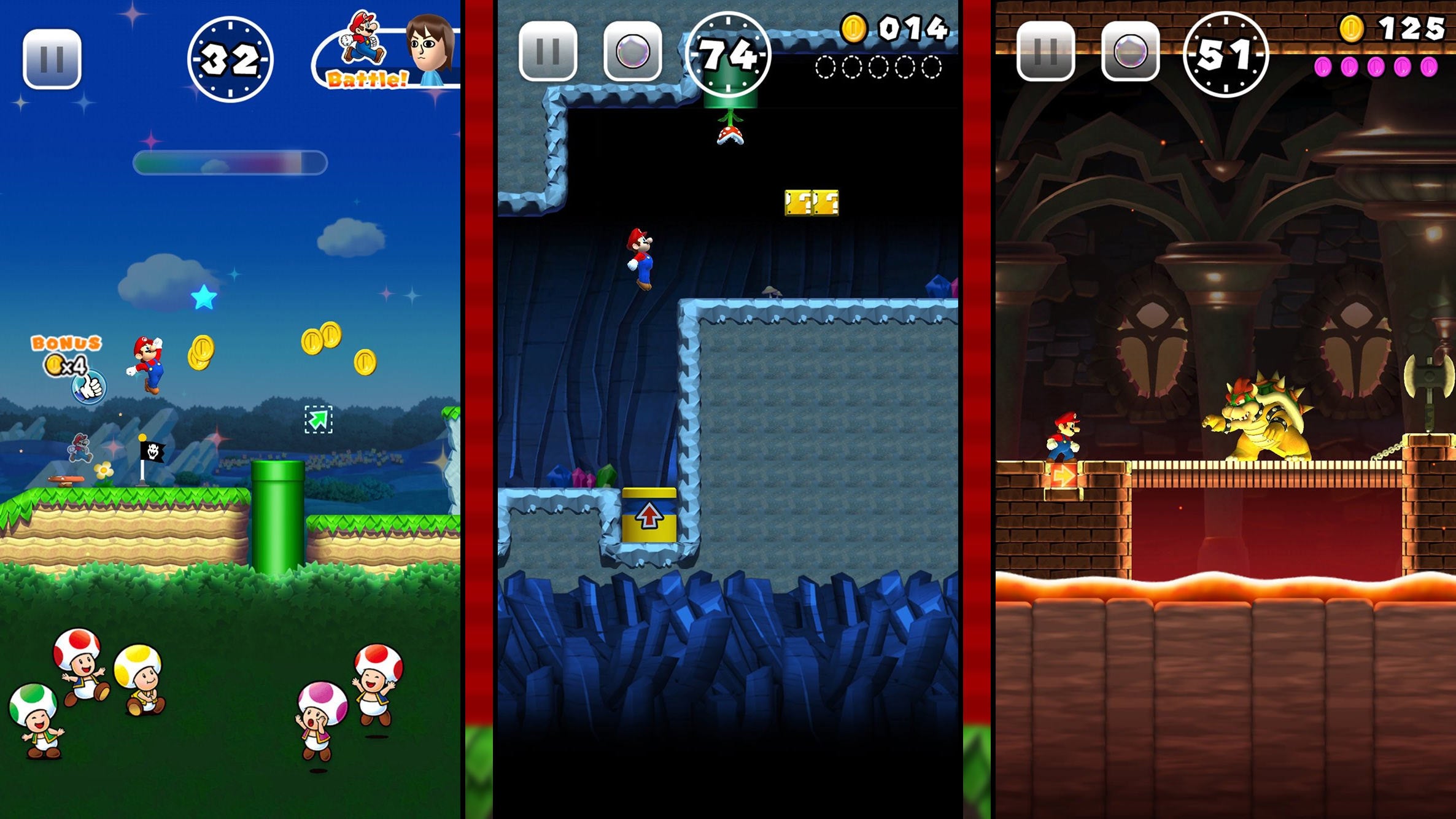
Super Mario Run is a brilliant attempt to make Nintendo’s mascot run and jump on a smartphone with just one input. It is also, without a doubt, the worst Super Mario game because making him run is half the fun. Do you want a peanut butter sandwich without jelly? Or chocolate cake without vanilla frosting? Here’s a gin and, uh, more gin.
The 2016 mobile game is a decent time waster and…that’s it. Perhaps that’s why Nintendo hasn’t made a sequel to it. Or maybe the Google Play and Apple App stores just remain completely hostile to premium experiences that don’t nickel and dime the user. In any event, Nintendo made Super Mario Run so we have to include it on this list and here it is. — Ethan Gach
Read More: Super Mario Run: The Kotaku Review
22. New Super Mario Bros. 2 (3DS)
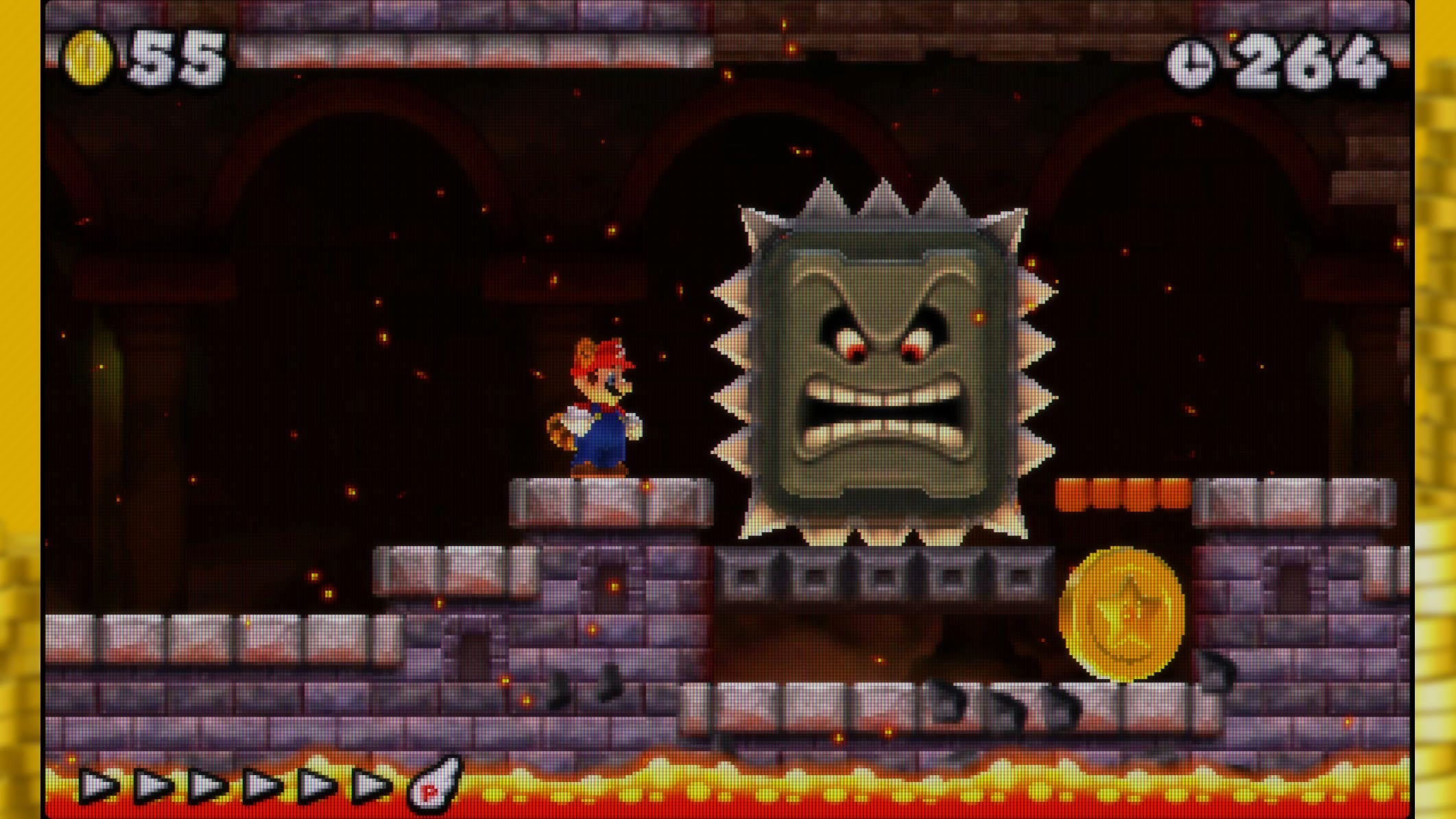
The New sub-series of Super Mario Bros. games had a penchant for over-promising and under-delivering. 2012’s New Super Mario Bros. 2 was the worst offender in this regard. It’s comforting, but short, breezy, and at times insultingly easy and simplistic. The soundtrack is largely one song on repeat that will make you want to mute your 3DS sooner than later. The game is a coin collectathon above all else, and while the moment-to-ment gameplay can still be fun, there’s nothing really memorable, let alone new, about the third entry in the New Super Mario Bros. series. — Ethan Gach
Read More: New Super Mario Bros. 2: The Kotaku Review
21. New Super Mario Bros. (DS)
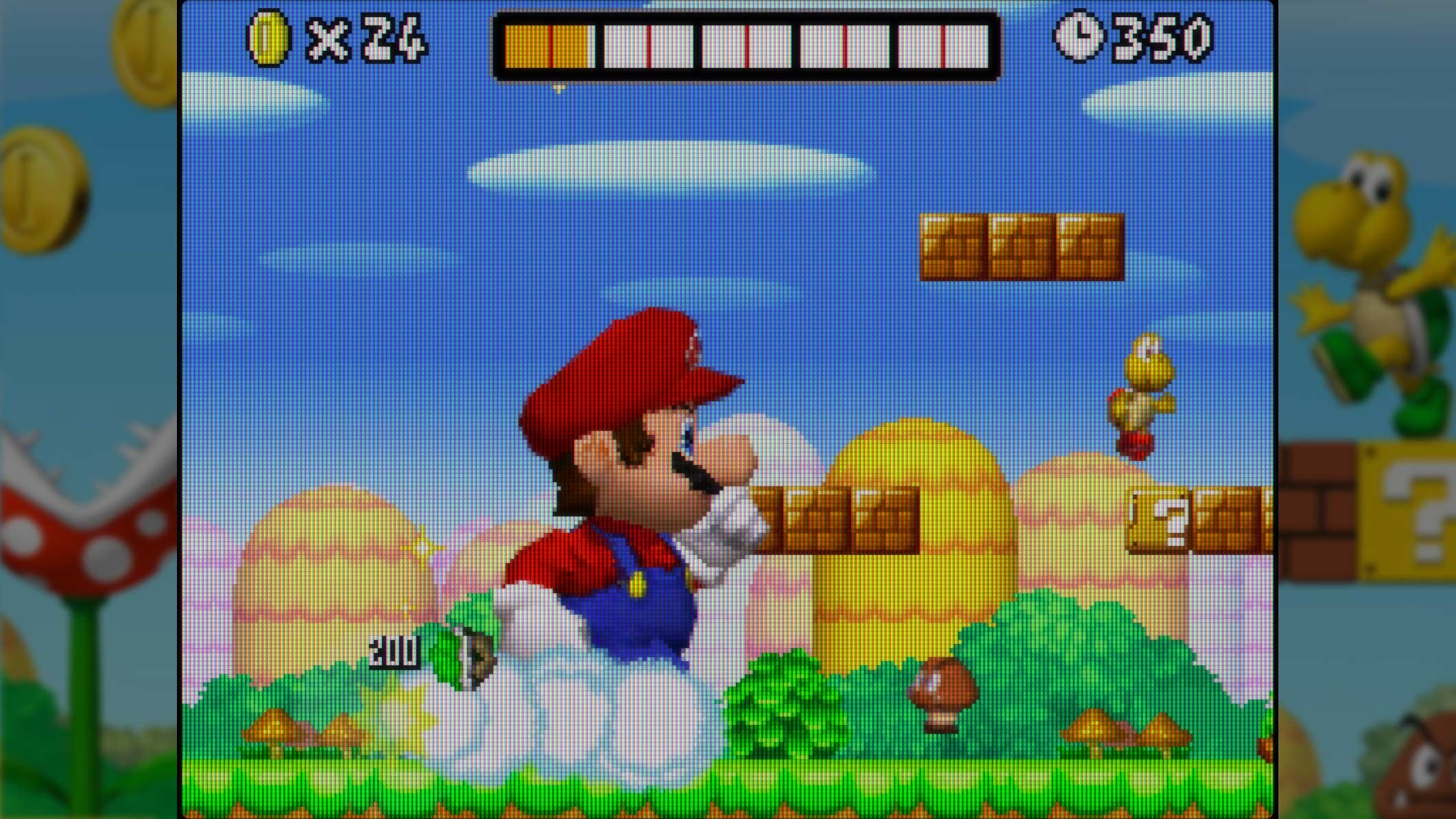
It may sound strange now, but back in 2006, classic 2D-style video games still felt like a bit of an endangered species. Consider this: 11 whole years (!) had passed since the Super Mario series’ last original side-scroller, Yoshi’s Island. You can see why folks were twitchy. As such, Nintendo announcing New Super Mario Bros. for its DS handheld made for a welcome surprise.
The game’s title alone was intriguing: no numbers, no subtitles, just the word “New” attached to the name of the side-scroller that changed everything back in ‘85. Indeed, this “new” Super Mario Bros. attempted something of a return to baseline, jettisoning some of the series’ later complications in favour of returning to more basic Mario action. I wondered if it’d rekindle the deep enjoyment I had derived from the original NES trilogy.
It did not. While GameCube’s slightly troubled Super Mario Sunshine had exposed some cracks in the edifice, New Super Mario Bros. ended up being the first mainline Mario that felt inessential. Its straightforward level designs and basic run-jump-bop action came off as bland, and its new ideas proved a mixed lot.
The wall-jumping manoeuvre was inoffensive, but the new power-ups ranged from “who cares?” to actively detrimental: The mega-mushroom rampages were just mindless spectacle, the mini mushroom was simultaneously too powerful and frustratingly required for important shortcuts, and the hard-to-control blue shell suit actively tried to send you careening off cliffs. I grew bored, and stopped playing around the sixth or seventh world.
New Super Mario Bros. was a solid platform game by most standards and the start of a welcome revival for side-scrolling Mario. But it didn’t measure up to the very high standard of its predecessors. — Alexandra Hall
Read More: Nintendo Chief: Mario Is Part Of Gamers’ DNA
20. Super Mario Land (Game Boy)
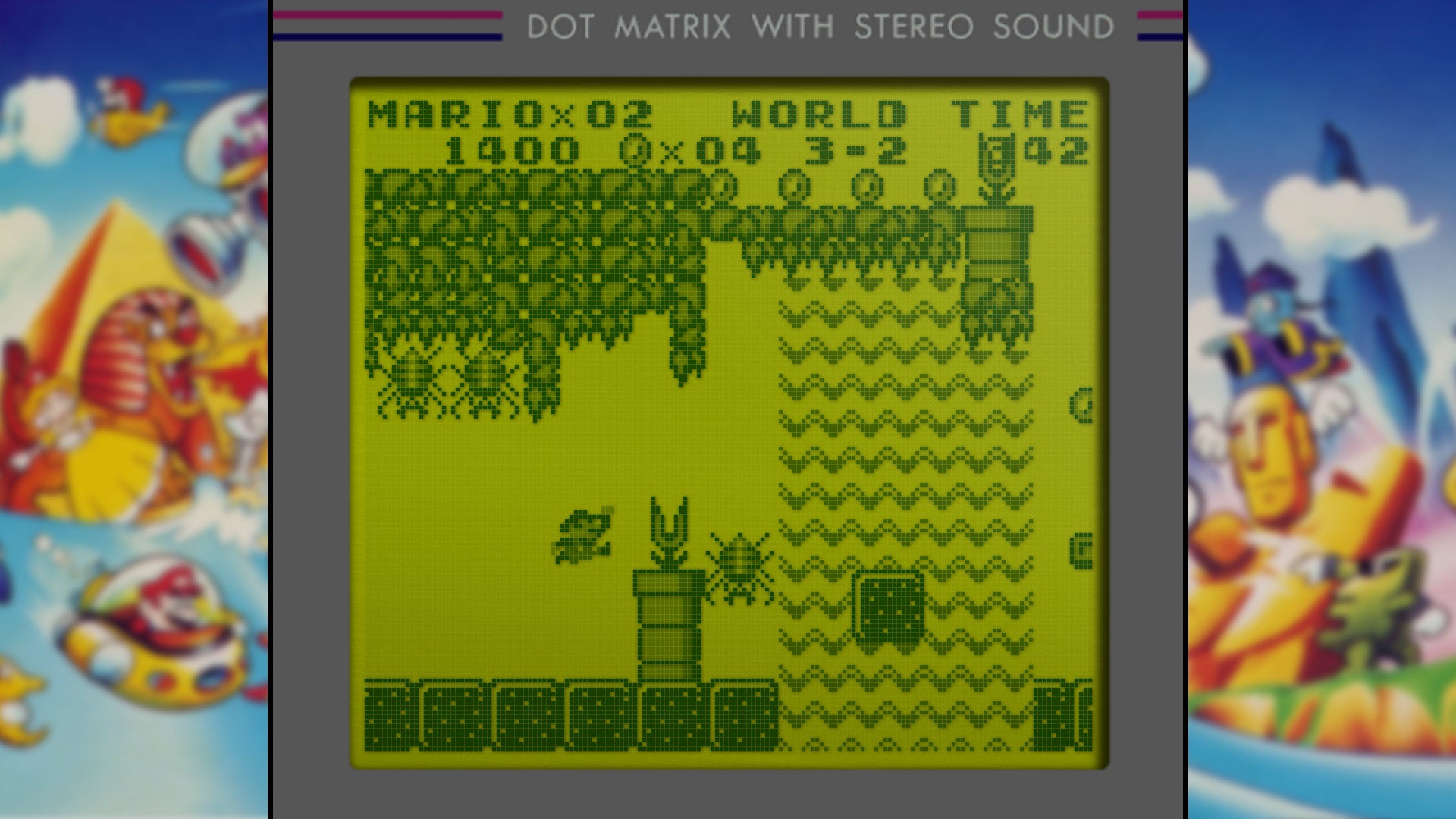
It was 1989 and Nintendo Entertainment System mania was in full swing. For Nintendo’s next trick it introduced the Game Boy, a category-defining new portable cartridge system. The NES had rocketed to success, in part, on the strength of Super Mario Bros., so Game Boy naturally launched with Super Mario Land, a bite-sized take on the platforming plumber.
Luckily Super Mario Land was quite good — heck, it eventually became the fourth best-selling Game Boy game (18 million!). The physics were kinda wonky, but the tiny Mario ran about nimbly, tossing ricocheting “superballs” at a strange new cast of bomb-shelled turtles, oversized insects, hopping kyonshi zombies, and a literal alien. It even had two mild but pleasant shoot ‘em up stages, in which Mario piloted subs and aeroplanes in hopes of rescuing a new princess, Daisy.
It turns out the weirdness was not just from the new platform, but because development was handled by Nintendo producer Gunpei Yokoi’s R&D1 group rather than Shigeru Miyamoto’s EAD. (R&D1 later made Super Mario Land 2 and branched off into the Wario series.) This is as off-brand as Mario would ever get, and I’d say the better for it. This was also the first Super Mario game with (very good) stereo music, and the first time western players — who’d missed out on the original Super Mario Bros. 2 — got to revisit the original adventure’s bricks-and-mushrooms formula.
Super Mario Land was a good, enjoyable game which, in hindsight, feels a little outshone by the brilliant games that followed. That doesn’t mean Mario’s charming visit to Sarasaland wasn’t a great way to burn through another set of four double-As, though. — Alexandra Hall
Read More: Game Boy Games Have Arrived On The Switch
19. New Super Mario Bros. Wii (Wii)
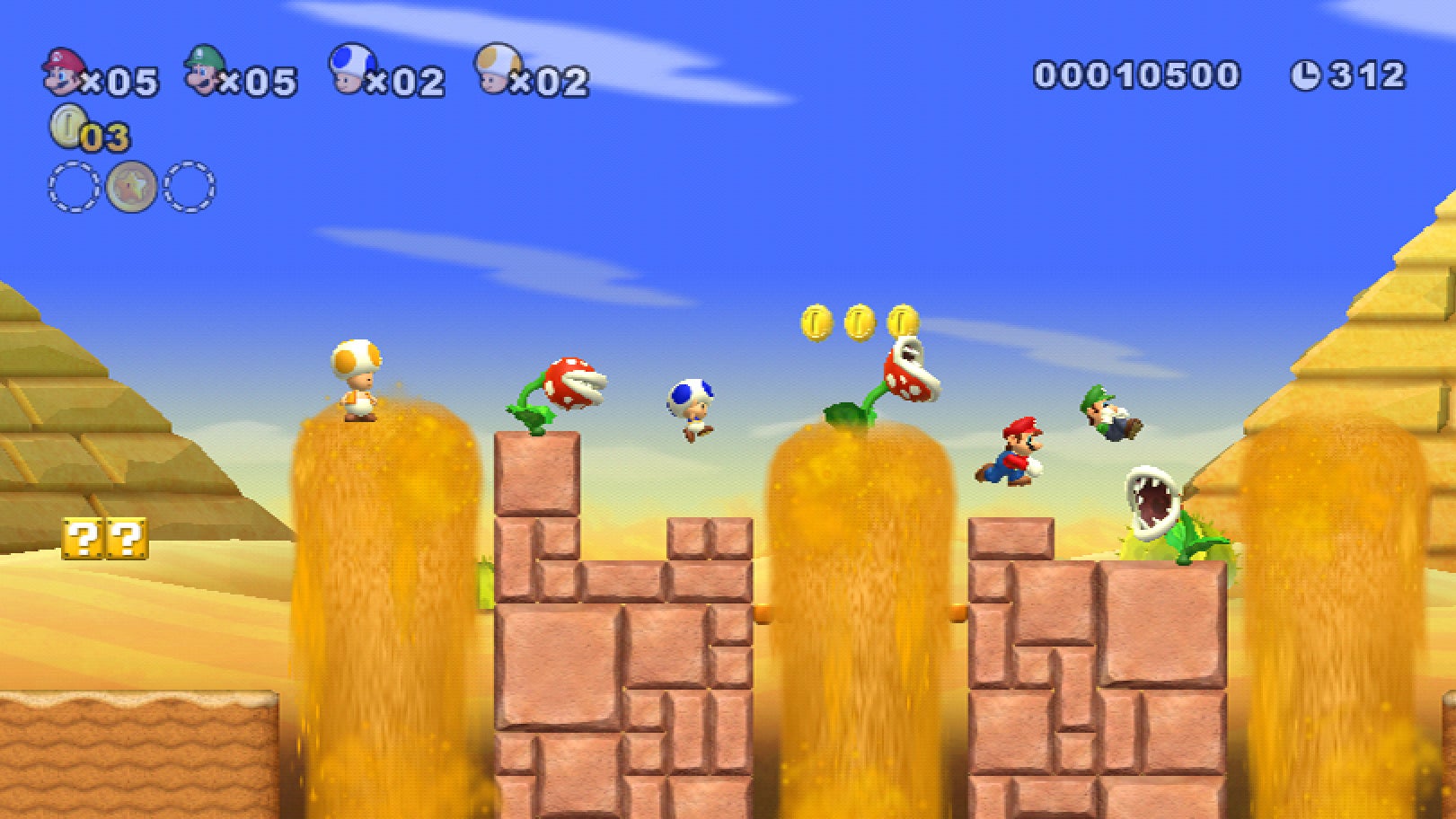
Wedged in-between the release of two of the best 3D Mario games ever, 2009’s New Super Mario Bros. Wii offered console players their first full-fledged return to 2D Super Mario action in well over a decade. This second entry in the New Super Mario Bros. series was beefy compared to its handheld predecessor.. The new jump-spin technique added more nuance to navigation and wild, four-player co-op (or was it?) offered a completely different way to enjoy the carefully paced, but sometimes rote levels. If New Super Mario Bros. Wii didn’t quite manage to shed the charges of blandness that dogged the DS game, its heavy helping of chaotic multiplayer mayhem made for a pleasant consolation prize. — Ethan Gach
Read More: New Super Mario Bros. Wii Review: Go Buy A Wii
18. Super Mario Land 2: 6 Golden Coins (Game Boy)
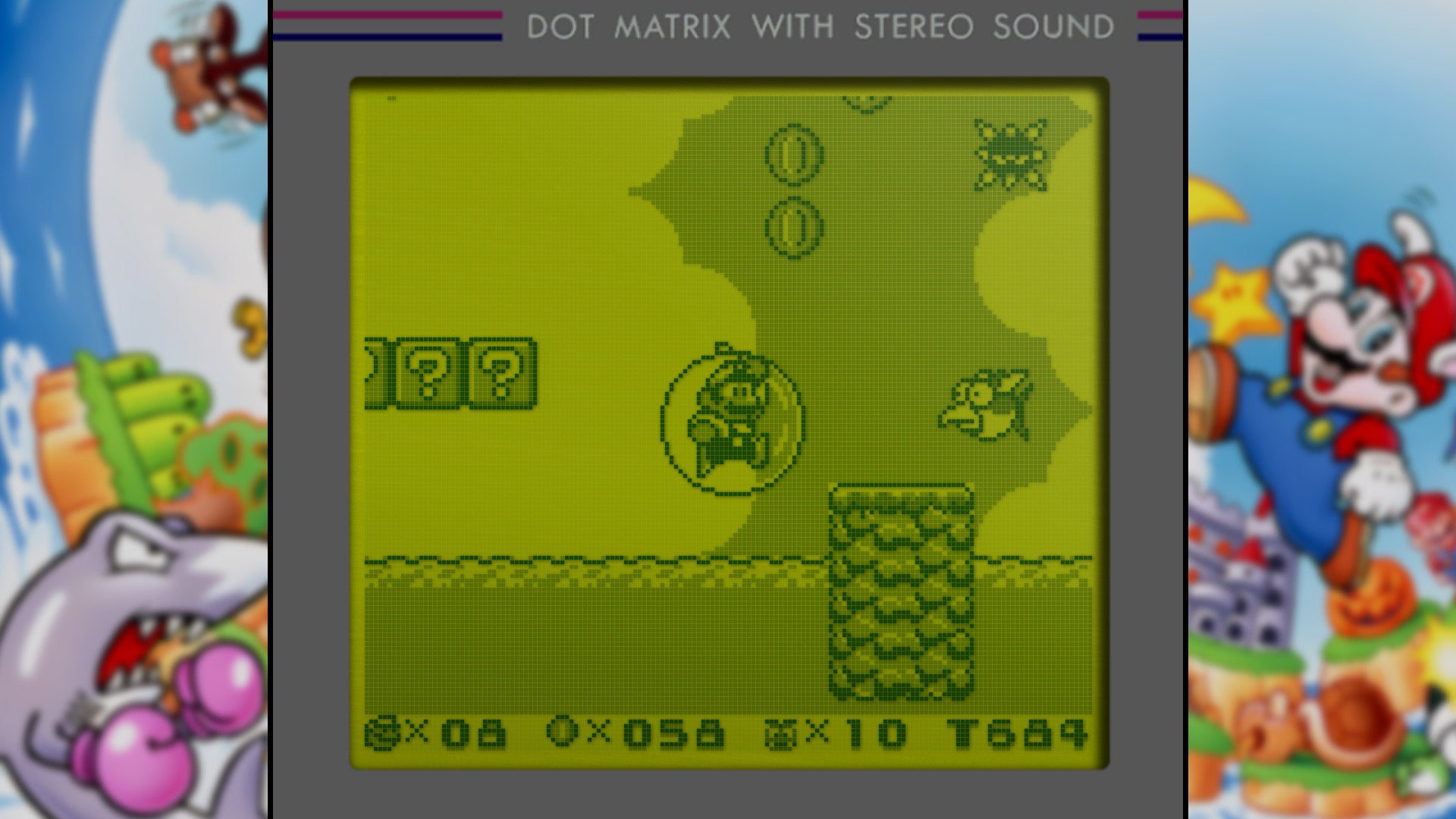
Building on the success of the first Super Mario Land, 6 Golden Coins carved out a cult-classic niche for itself by living halfway between all-time greats Super Mario Bros. 3 and Super Mario World and introducing flatulent bad boy Wario to the world. A much more sophisticated affair than its predecessor, you can now roam a world map, scroll in all directions, and occasionally find secret exits that unlock hidden levels.
Mario Land 2 oozes personality from top to bottom, with memorable overworld maps and detailed sprites, including Wario’s own imposing and garish figure. Rather than just feel like a fun but inferior approximation of the console 2D Super Mario experience, Nintendo R&D1’s 6 Golden Coins feels like the series reflected through Alice in Wonderland’s looking glass, complete with a unique musical soundtrack and rewardingly goofy boss fights. — Ethan Gach
Read More: Wario’s Big Speaking Role For…A British Supermarket
17. Super Mario 3D Land (3DS)
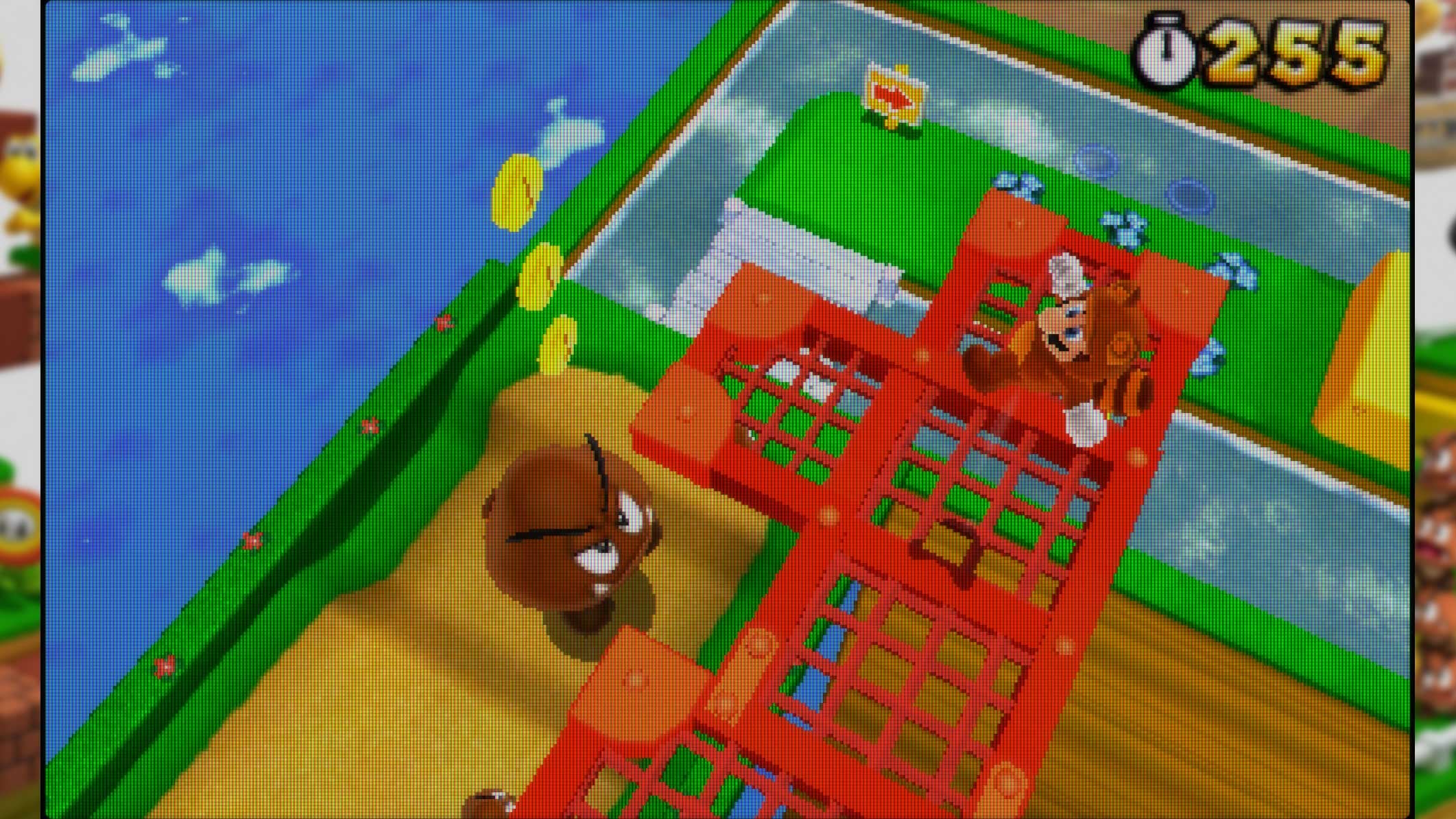
Super Mario 3D Land is now overshadowed by its bigger, better successor for the Wii U and Switch, and because it’s relegated to the 3DS, it may soon become one of the least-accessible mainline Mario games, doomed to relative obscurity. But when it arrived in 2011, 3D Land was one of the best titles for Nintendo’s gimmicky dual-screen handheld.
A game of small but satisfying stages perfect for play on the go, it took a refreshingly different approach to 3D Mario platforming than games like Sunshine and Galaxy had, one rooted more in the design principles of early 2D Mario games. Today in some ways it feels like a strong proof of concept, establishing ideas that would be more fully realised in 3D World. But if you ever find yourself with a hankering for some Super Mario action and only a 3DS at your disposal, you could do a lot worse than this charming and innovative pleaser. — Carolyn Petit
Read More: Super Mario 3D Land: The Kotaku Review
16. New Super Mario Bros. U (Wii U)
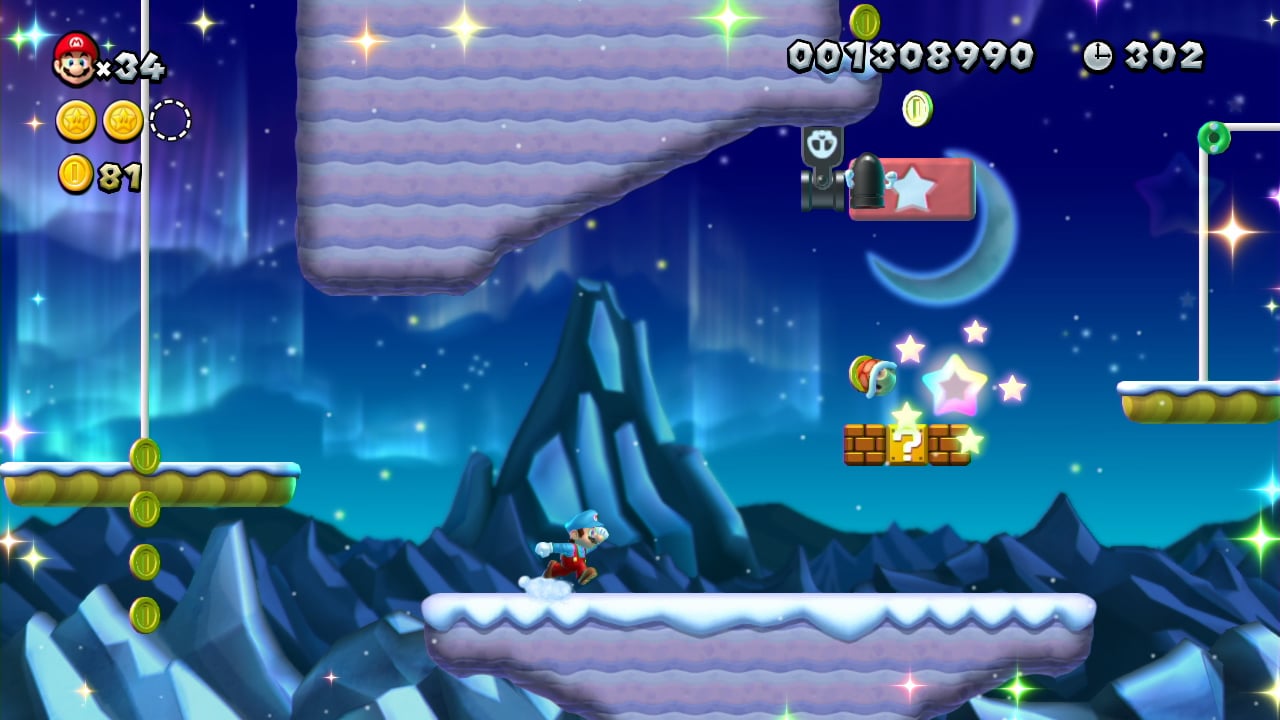
By the time New Super Mario Bros. U came along, the whole NSMB series seemed pretty worthy of writing off. Their largely uninspired level design made the whole series feel like a soulless attempt to cash in on nostalgia for earlier Super Mario side-scrollers, with little understanding of what made people love those games in the first place.
That all went out the window with New Super Mario Bros. U (which, thankfully, is not relegated to the Wii U on which it was first released, having gotten a Switch incarnation in the form of New Super Mario Bros. U Deluxe). Here, at last, was new (and New) Mario platforming with lively, varied levels that also did one of the things Nintendo does best, presenting a fairly easy (but still fun and inventive) challenge that most players of different skill levels can complete to get the satisfaction of “beating Bowser,” while also providing an intensely challenging and rewarding quest for those who wanted to 100% the game and truly test their platforming skills.
If you overlooked this game because you thought the New series just wasn’t delivering on its promise, you may want to give it a chance. It’s a terrific 2D thrill ride that actually understands what makes the best Mario level design so good, and sometimes even offers up some exciting surprises of its own. — Carolyn Petit
Read More: New Super Mario Bros. U Deluxe: The Kotaku Review
15. Super Mario Maker (Wii U / 3DS)
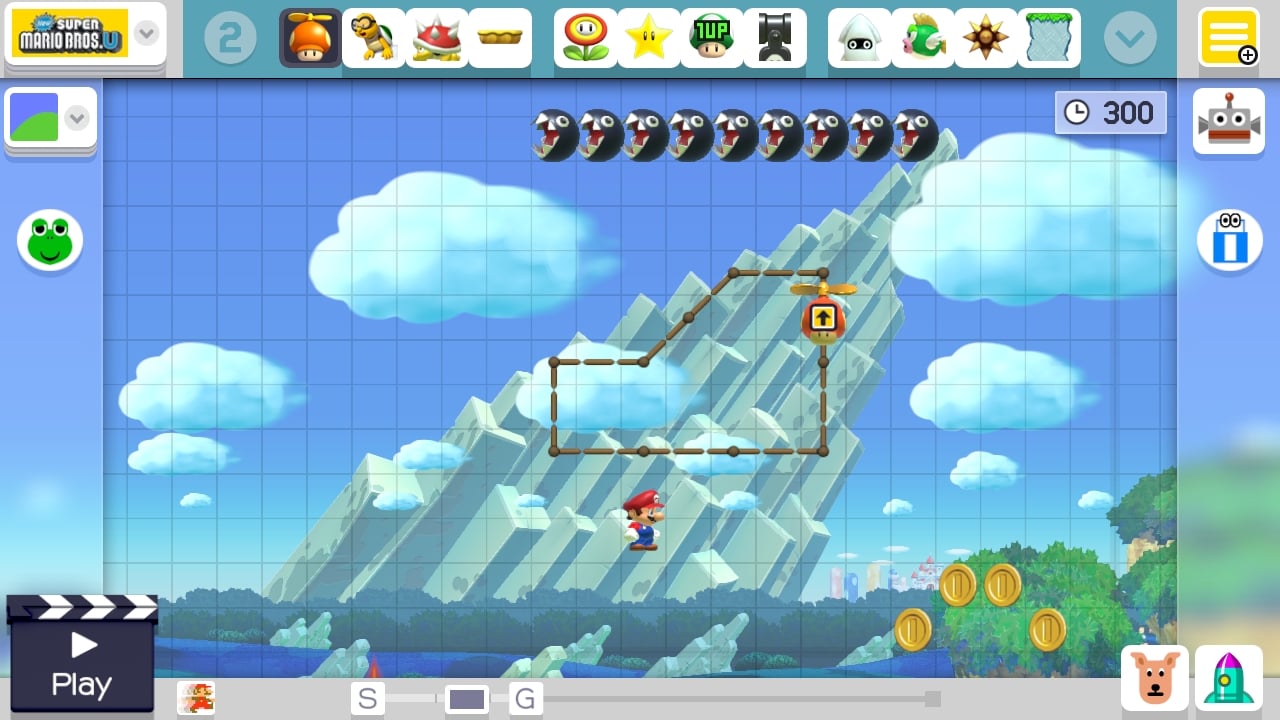
Nintendo is notorious for keeping an iron grip on its properties, and if you play its 2015 platformer creation kit for a minute you might understand why: Left unchecked, most of us will create impossible troll rooms that double as torture chambers. Most people can’t make levels that capture, much less outdo, the simple brilliance of any single level from the first Super Mario Bros.
But the beauty is in that same madness. Nintendo has, for the most part, moved on from 2D Mario games. Why not let players run wild with their own designs? Every so often, someone will put together a world that rivals if not outdoes Nintendo’s own creations. If nothing else, it was a hoot to watch people spend months trying to beat diabolical levels made by Satan himself, along with tinkerers pushing the game engine to its very limits. — Patricia Hernandez
Read More: Super Mario Maker Is Forcing Me To Leave My Wii U On All Day
14. Super Mario Bros. 2, aka The Lost Levels (NES)
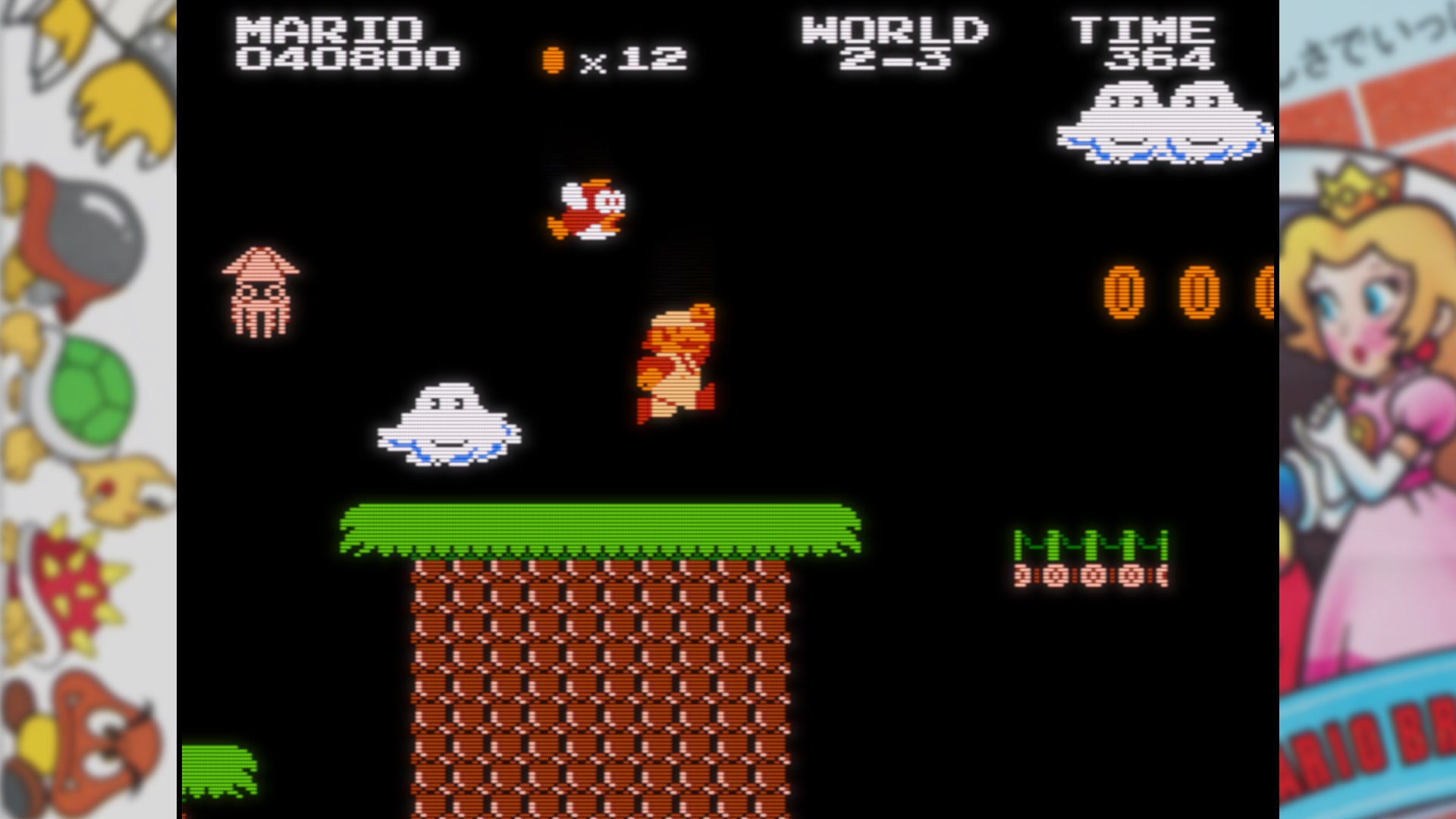
The Japanese version of Super Mario Bros. 2 is essentially Super Mario Bros., but harder. Its cute little disk seems to taunt, “Oh, you think you’re hot stuff for rescuing the princess? Well, try these levels on for size.” Except here in the west we couldn’t, because the folks at Nintendo apparently deemed this sequel too difficult for foreign markets.
They weren’t wrong. Compared to the challenging but relatively chill original, the Japanese Super Mario Bros. 2 is kind of mean. It sets the tone immediately by making the first “power-up” a poison mushroom which kills you. Or a few worlds in, you might find a beanstalk that leads to the sky. In the first game this was cause for celebration, but here your reward is a reverse “warp zone” that sends you all the way back to world 1-1. But don’t fret: In a hilarious example of the game’s twisted version of “mercy,” a small chasm next to the unwanted warp pipe offers the opportunity to dispose of your current Mario should you wish to avoid being sent back. Aw, those softies.
Sadism aside, Super Mario Bros. 2 really is more a Super Mario Bros. expansion than a wholly original sequel. A lot of the tile graphics are redone to be uglier, there aren’t many new items or foes, and you need to beat worlds one through eight a whopping eight times to unlock the even harder worlds A through D. Oh, and now Luigi has his different physics.
Is it good? Sure, in that it’s more Super Mario Bros., the landmark action game that changed everything. But the west never saw this sequel until it was part of the 1993 SNES remake package Super Mario All-Stars, by which point we’d also experienced the first two Super Mario Land games, Super Mario Bros. 3, and Super Mario World. So many folks, myself included, didn’t get a chance to experience this one fresh out of the oven, and I know I don’t quite appreciate it as much as a result. It’s also not a big leap to suggest that the first Super Mario outing is just plain more appealing to a wider audience. — Alexandra Hall
Read More: Super Mario Bros. 2 Japan + Super Mario Bros. 2 USA = My Dream Game
13. Super Mario Maker 2 (Switch)
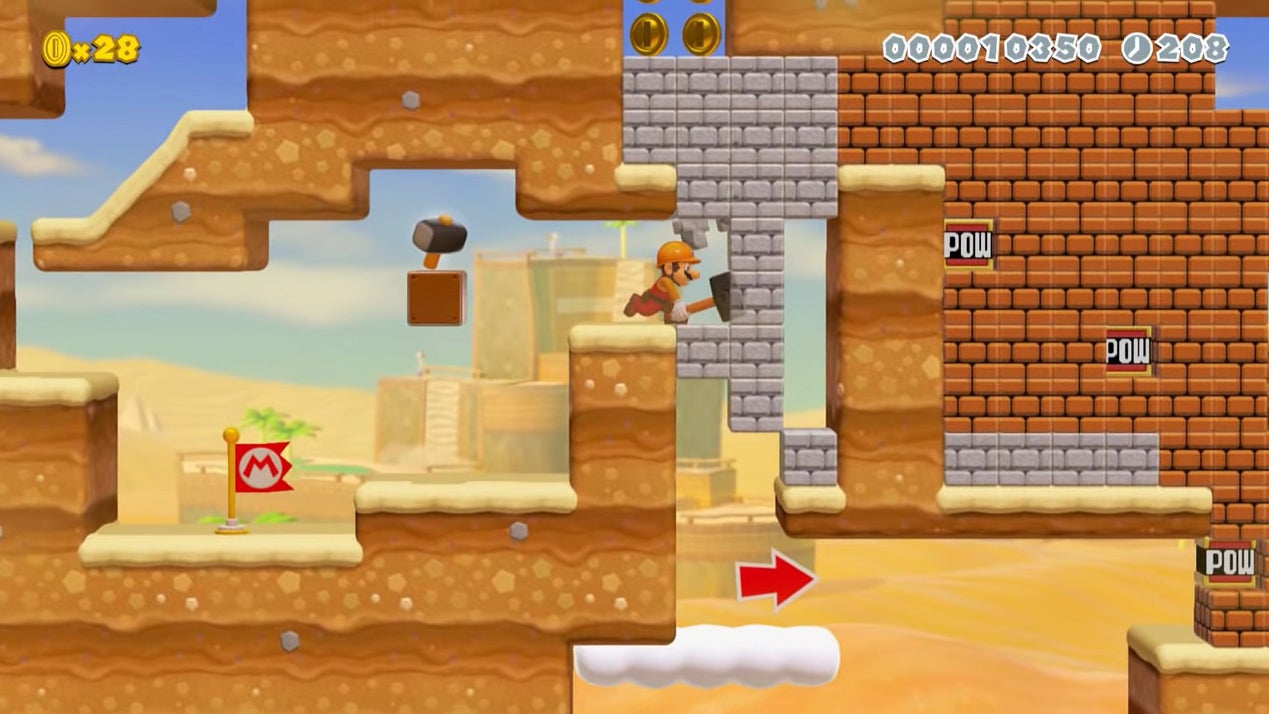
Bigger and better than the first in almost every way, Super Mario Maker 2 is a pretty obvious case of more is more. The content creator playground remains alive and vibrant, for one, which already puts it head and shoulders above the 3DS and Wii U originals. No, the UI experience isn’t quite as good as on the Wii U, whose tablet felt custom-made for crafting new Mario levels. And there are weird oversights and missing features, like no 100-man challenge mode and no ways to track stats or help players easily discover cool creations. The sheer number of new design elements helps make up for that, however. And the new story mode is a drastically better teaching tool that has neat levels of its own. — Ethan Gach
Read More: Super Mario Maker 2: The Kotaku Review
12. Super Mario Bros. (NES)
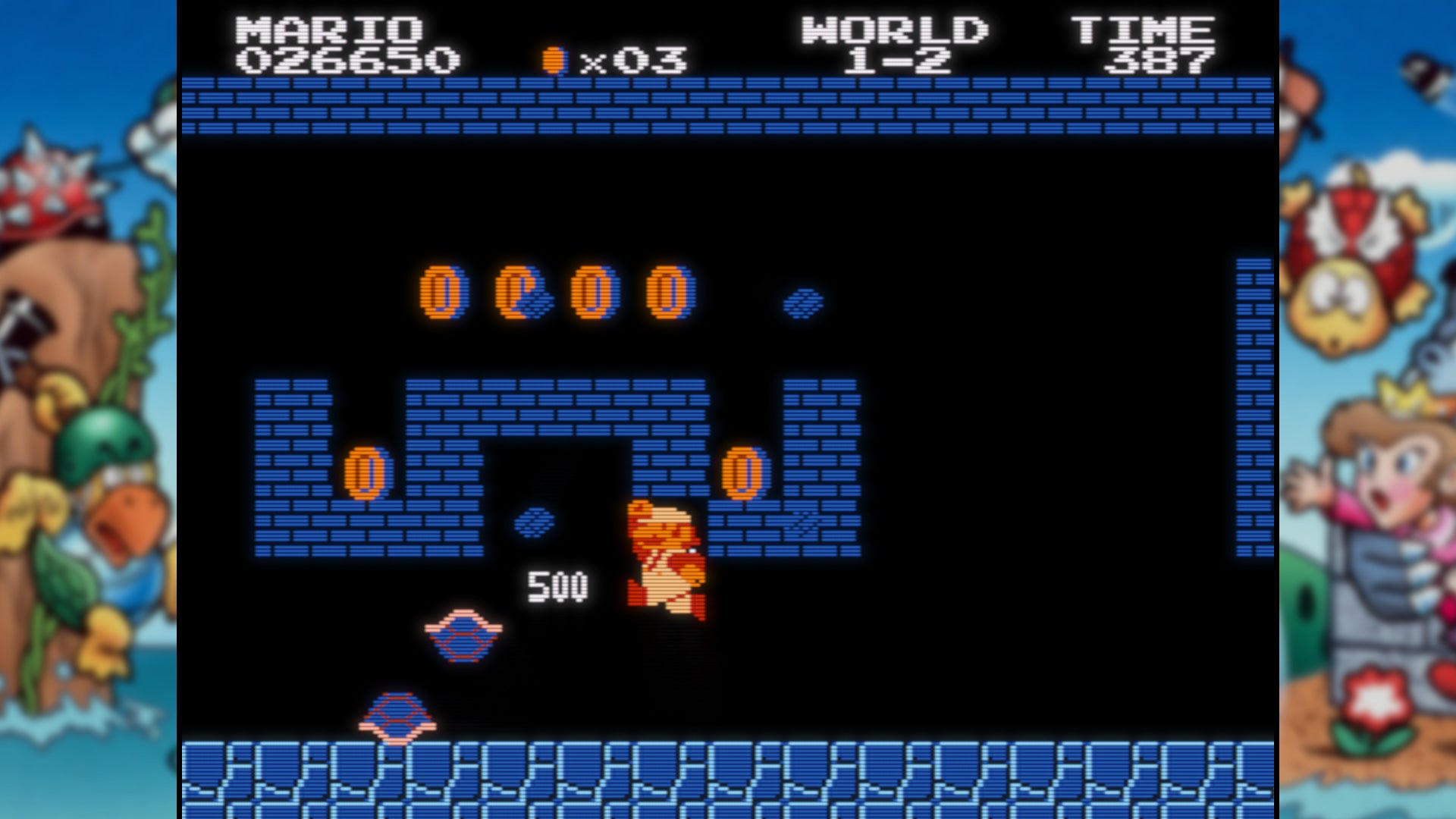
Super Mario Bros. was hardly the first game with side-scrolling, character-based action. Taito’s Jungle King / Jungle Hunt had it as early as 1982, and gaming’s first true superstar, Pac-Man, got his own cartoonish side-scroller in 1984’s Pac-Land. But nonetheless, to play Super Mario Bros. in 1985 was to know that everything had changed.
It was an absolute revelation to see Mario, previously the star of Donkey Kong and Mario Bros., bust free from the single-screen confines of the past and run toward the right. A whole world of adventure awaited him, packed with immediately iconic power-ups, unforgettable secrets, a real sense of vastness and depth thanks to subterranean stages, and bonus coin zones hidden in the clouds.
But of course, none of that would have mattered if Super Mario Bros. didn’t feel so damn good to play. The option to hold down a button to run, the way Mario soared through the air, the sheer bliss of getting an invincibility star and ploughing right through rows of goombas and koopas, all of it elevated Super Mario Bros. far beyond any side-scroller that had come before.
It’s also, for my money, the first game in which Nintendo’s signature, subtly intuitive level design is on display. There’s a reason why world 1-1 remains iconic to this day: Shigeru Miyamoto knew exactly what he was doing, telling you everything you needed to know with just a goomba and one super mushroom. And yet, for all its fundamental simplicity, the game continues to surprise as you progress, introducing nefarious new challenges (those damn hammer bros.!) and capping off each world with a castle so treacherous that surviving leaves you feeling both triumphant and relieved.
Some might argue that although it kicked off an action-gaming dynasty, the original Super Mario Bros. isn’t worth going back to today. I disagree. I think its level design is timelessly great (unlike that of some games in the New Super Mario Bros. series), its music and visuals are enduringly charming, and its controls as pleasurable and intuitive today as ever. Games that change the landscape of gaming forever are rare, but this is one of them, no question about it. — Carolyn Petit
Read More: ‘When We Show A Power-Up To Mr. Miyamoto, We Get A Bit Nervous.’
11. Super Mario Bros. 2 (NES)
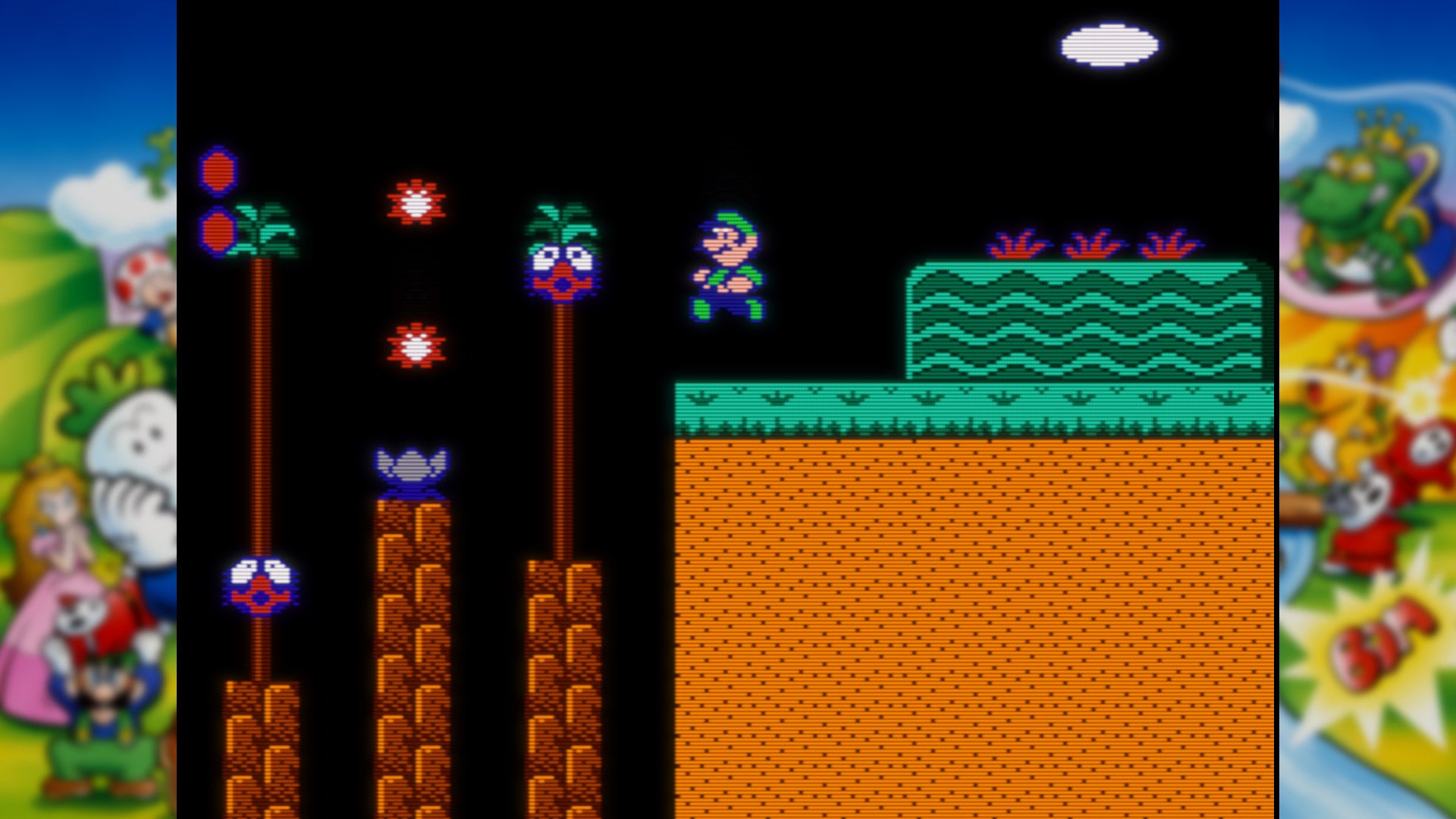
Super Mario Bros. was a game about jumping on turtles, growing large, and smashing bricks. Then Super Mario Bros. 2 came out and had us ripping up grass to find gambling money, assailing trans elders with their own eggs, and force-feeding turnips to a despotic toad to liberate a subconscious dream land. Whiplash much?
Nope! I was a child, and did not think to question this massive change in gameplay, tone, or plot. (Wish I could be so mellow today!) I just knew that Super Mario Bros. 2 was hard to find in stores, fun as heck, and had graphics so good that I sincerely believed it looked like a damn cartoon.
Of course, everyone now knows that Nintendo pulled a switcheroo, withholding the real Super Mario Bros. 2 — a sort of high-difficulty level pack for the original adventure — and reskinning the Famicom Disk System game Doki Doki Panic with Mario characters for the west.
While a few folks will always kvetch about not getting Super Mario Bros.’ “true” sequel, truth is, the weird, trippy adventure we ended up with is a fantastic 2D platformer full of curious, colourful sights and pleasing discoveries. It’s got a good difficulty curve and is just an all around pleasant time. A lot of its innovations even persist in the series today, including Peach’s float ability, Birdetta, bob-ombs, and the lovably weird shy guys, so I think history is on its side.
I miss the days, before everything went big-budget triple-A and games got “too big to fail,” when major game companies felt free to develop “weird sequels.” — Alexandra Hall
Read More: America Got The Better Super Mario Bros. 2
10. Bowser’s Fury (Switch)
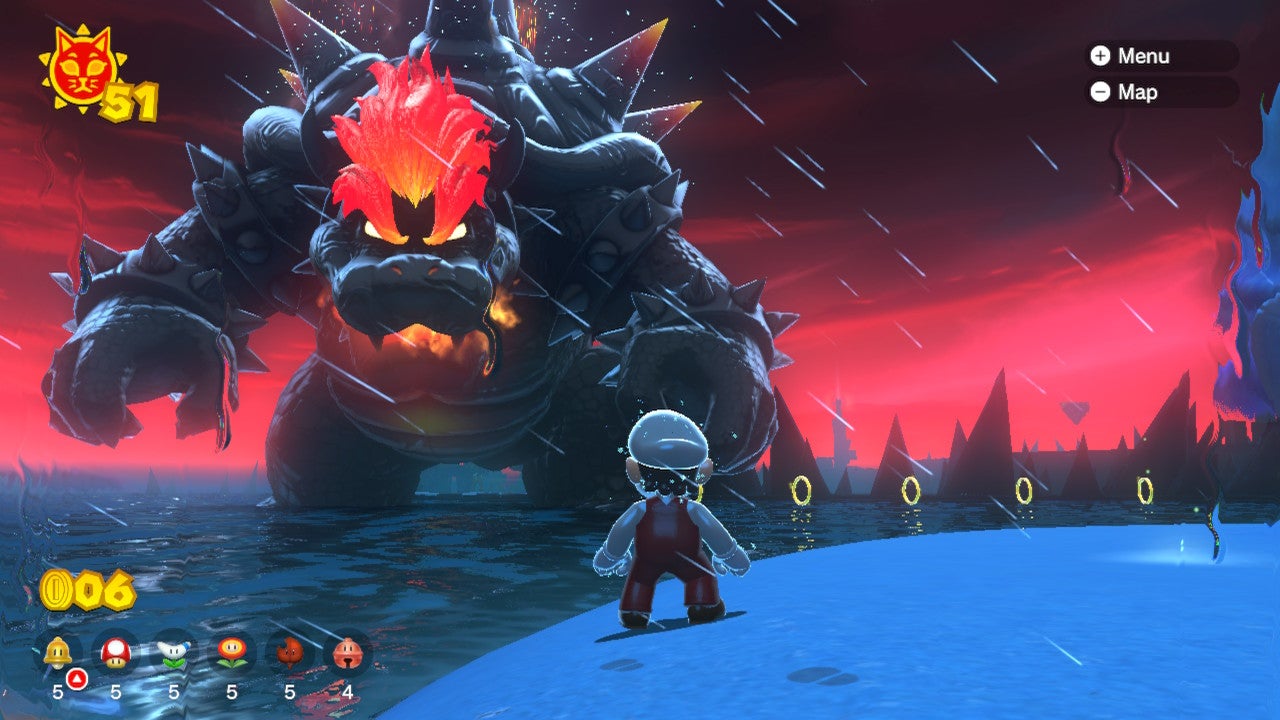
Some might argue that Bowser’s Fury, which came packaged with the Switch re-release of Super Mario 3D World, isn’t even a Super Mario Bros. game. It’s more like an expansion, they might say, just an experiment in modernising Mario gameplay using a Wii U game as a base. But whatever, it rules, so it’s on the list!
Throwing a lot of traditional Mario ideas out the window, Bowser’s Fury is an open-world game in which you spend most of your time doing standard platforming stuff but every so often the sky goes dark and you get to fight (or run/hide from) a Godzilla-sized incarnation of Mario’s arch-foe. It is a sight to behold, one of the coolest individual moments in series history, and while there’s not much variety or scope to Bowser’s Fury — the whole game is over in just a few hours — for as long as it lasts this is almost as good as Super Mario gets. — Luke Plunkett
Read More: I Hope Bowser’s Fury Is The Future Of Mario
9. Super Mario World 2: Yoshi’s Island (SNES)
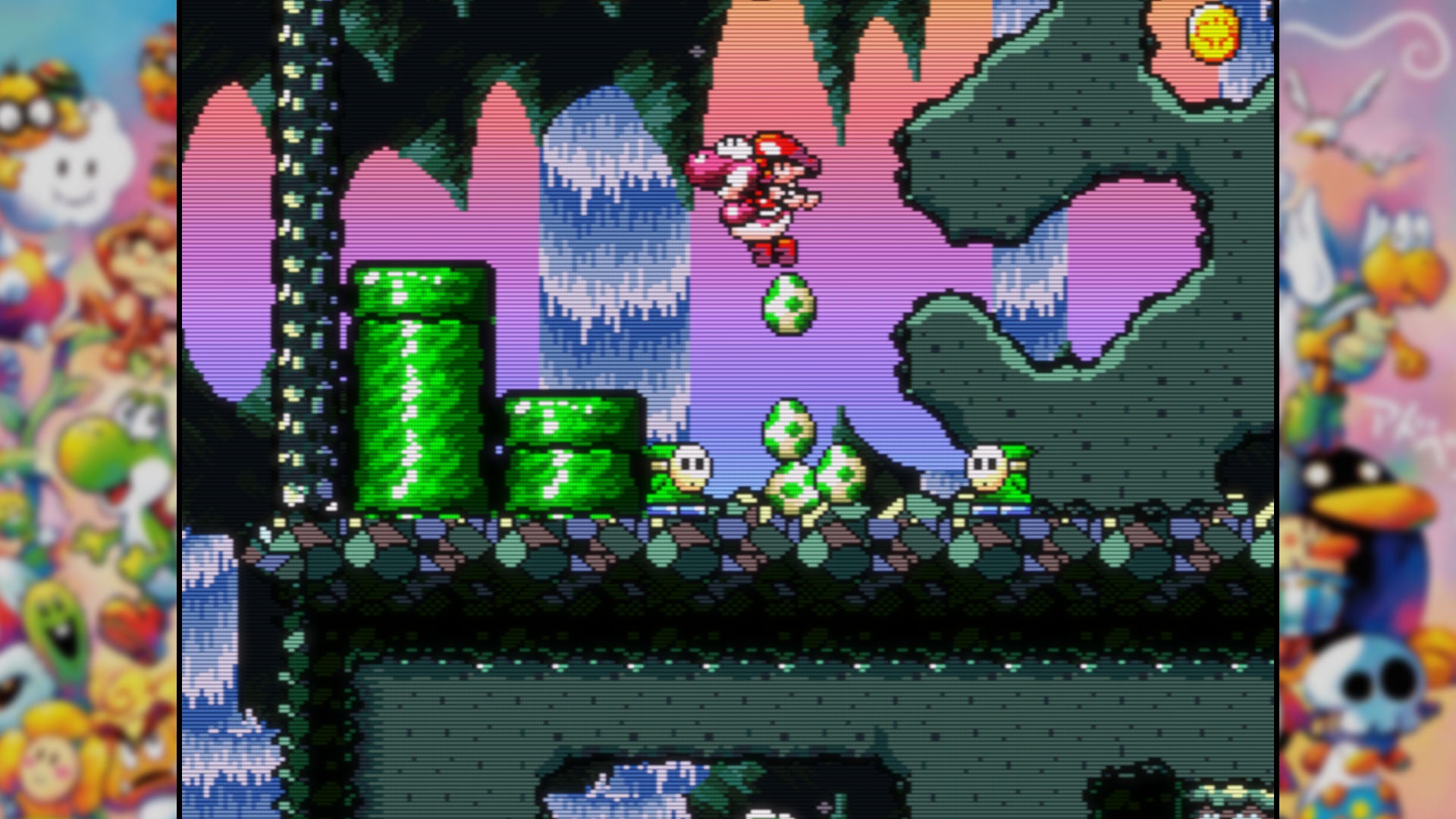
Up until this point, Super Mario games starred Mario and were largely linear affairs. Find some secrets. Survive. Get to the end. Yoshi’s Island switched the emphasis from simply getting from point A to point B to grabbing every collectible and solving every puzzle in-between. It had a playful, twee art style that would become a mainstay for Yoshi games moving forward, but still featured the titular hero in an origin story in which the fail state wasn’t getting hit too many times, but having your baby Mario abducted.
Some might consider Yoshi’s Island firmly in the Yoshi-game camp, but that subtitle stands, and a number of play mechanics, like red coins, went on to become staples of later Super Mario games. Even Yoshi transforming into vehicles like a helicopter hinted at Mario’s own transformations decades later in Super Mario Odyssey. From its level design to its boss fights, Yoshi’s Island remains one of the most beautiful Mario games ever made, and an oddly subversive, playful mashup that trades challenging platforming for deep exploration. — Ethan Gach
Read More: Yoshi Devolved From Babysitter to Baby
8. Super Mario Sunshine (GameCube)
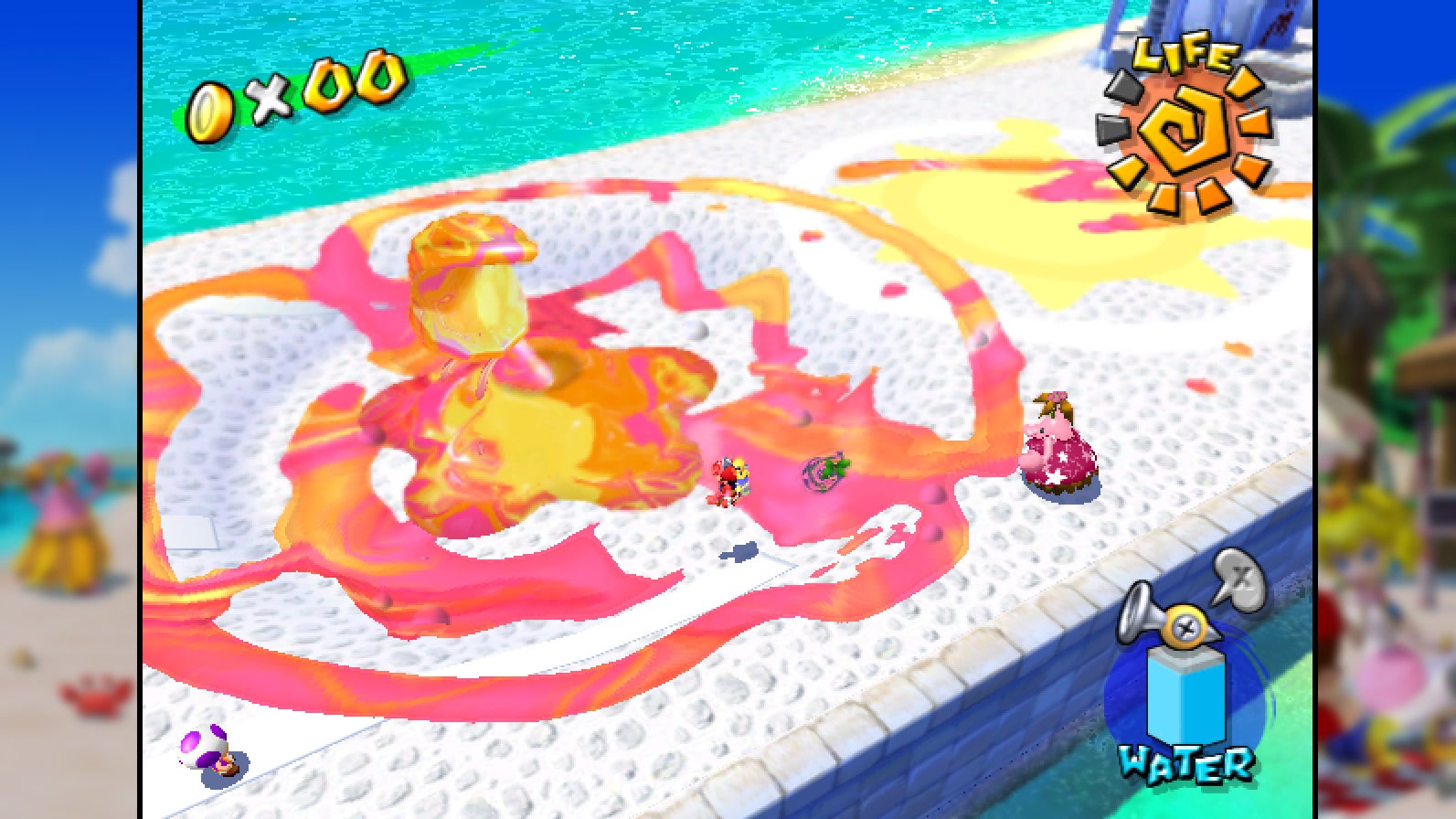
Like a lot of GameCube games, Super Mario Sunshine didn’t advance the series so much as take it sideways. The result isn’t always perfect, but it can still often manage to feel revelatory. Mario’s vacation to Isle Delfino Island sees him strap a robotic water pump to his back to clean up goop and rescue Princess Peach from the consequences of Bowser’s poor parenting. Between detailed, open-ended levels and Mario’s new water jetpack, Sunshine transforms where Mario can go and how he gets there. It’s not quite an open world, but it feels almost as liberating.
The story beats and sporadic voice acting don’t always land, and the Pianta and Noki islanders haven’t etched themselves into the series’ lore the way other, more beloved creatures have. In fact, Super Mario Sunshine has a lot of rough edges, not the least of which are the finicky camera controls. Halfway between a Super Mario 64 sequel and a completely new type of 3D Mario game, Sunshine still managed to rise above its flaws thanks to some clever puzzle mechanics and imaginative map designs. It’s a Super Mario game based around a gimmick, but still a great one. — Ethan Gach
Read More: Let’s Debate The Merits Of Super Mario Sunshine
7. Super Mario Odyssey (Switch)
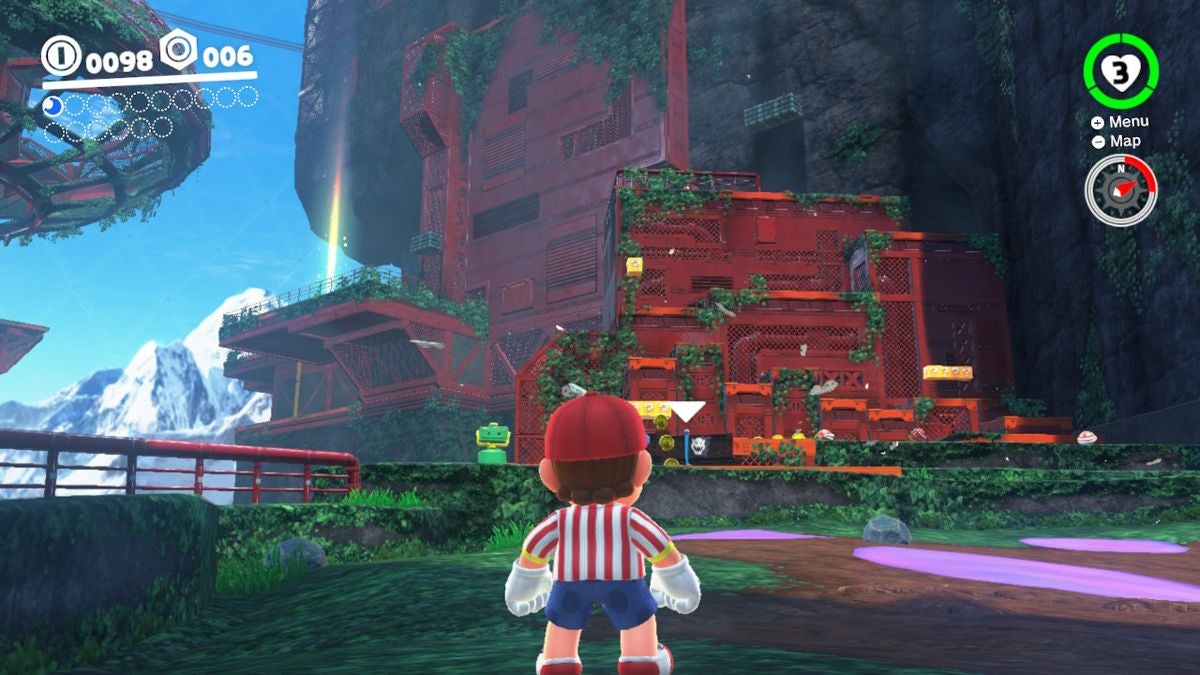
Super Mario Odyssey is one of the best Switch games ever released. It boasts some of the best-looking and biggest worlds seen in a 3D Super Mario game and is just a joy to play. It’s one of those games that can easily suck away a whole day before you realise it.
Odyssey is also endlessly creative, using Mario’s new hat friend for all sorts of interesting and silly shenanigans. How many Mario games let you become a tank, control a large T-Rex, or turn into literal electricity? Every hour in Odyssey is exciting as you explore new worlds filled with completely original ideas and moments.
And then there’s the music! Super Mario Odyssey features some of the best jams in the entire series and that’s without mentioning that incredible music-themed stage in New Donk City. It’s just a pure joy machine and easily one of Nintendo’s best 3D Super Mario adventures. — Zack Zwiezen
Read More: Super Mario and can youOdyssey, Six Months Later
6. Super Mario 3D World (Wii U)
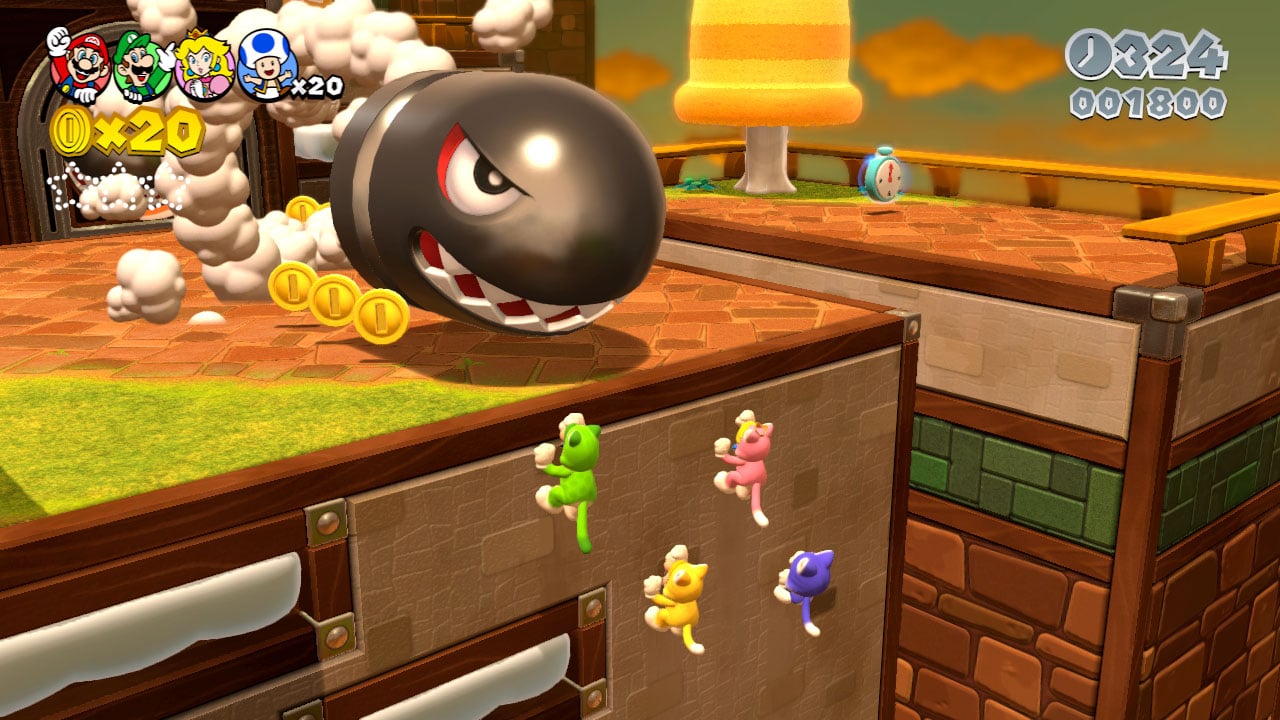
Move aside, New Super Mario Bros.. Despite the 3D in its title and the fact that, yes, the gameplay takes place in three dimensions, it’s actually here in Super Mario 3D World that the spirit of early Super Mario’s tightly designed obstacle courses is most apparent, and most thrillingly iterated upon. The new Cat Mario power-up belongs directly in the lineage of all of Super Mario Bros. 3’s classic animal costumes, and the flagpoles at each level’s end hearken back to the game that started it all.
But it’s much more than just a tribute to those classics. The 3D environments open up a slew of new possibilities that the level designers make the most of, four-player co-op makes for delightful chaos, and the game’s difficulty teeters brilliantly between accessible (for players who want a breezy but satisfying experience) and nail-biting (for those who want to test their skills and tackle every challenge the game has to offer). While other 3D Mario games like Super Mario 64 and Super Mario Odyssey have focused on more expansive environments for us to explore, Super Mario 3D World’s narrower, more propulsive stages chart a categorically different course, one that keeps the spirit of early Super Mario alive while also investing it with wonderful new ideas. — Carolyn Petit
Read More: Super Mario 3D World: The Kotaku Review
5. Super Mario 64 (Nintendo 64)
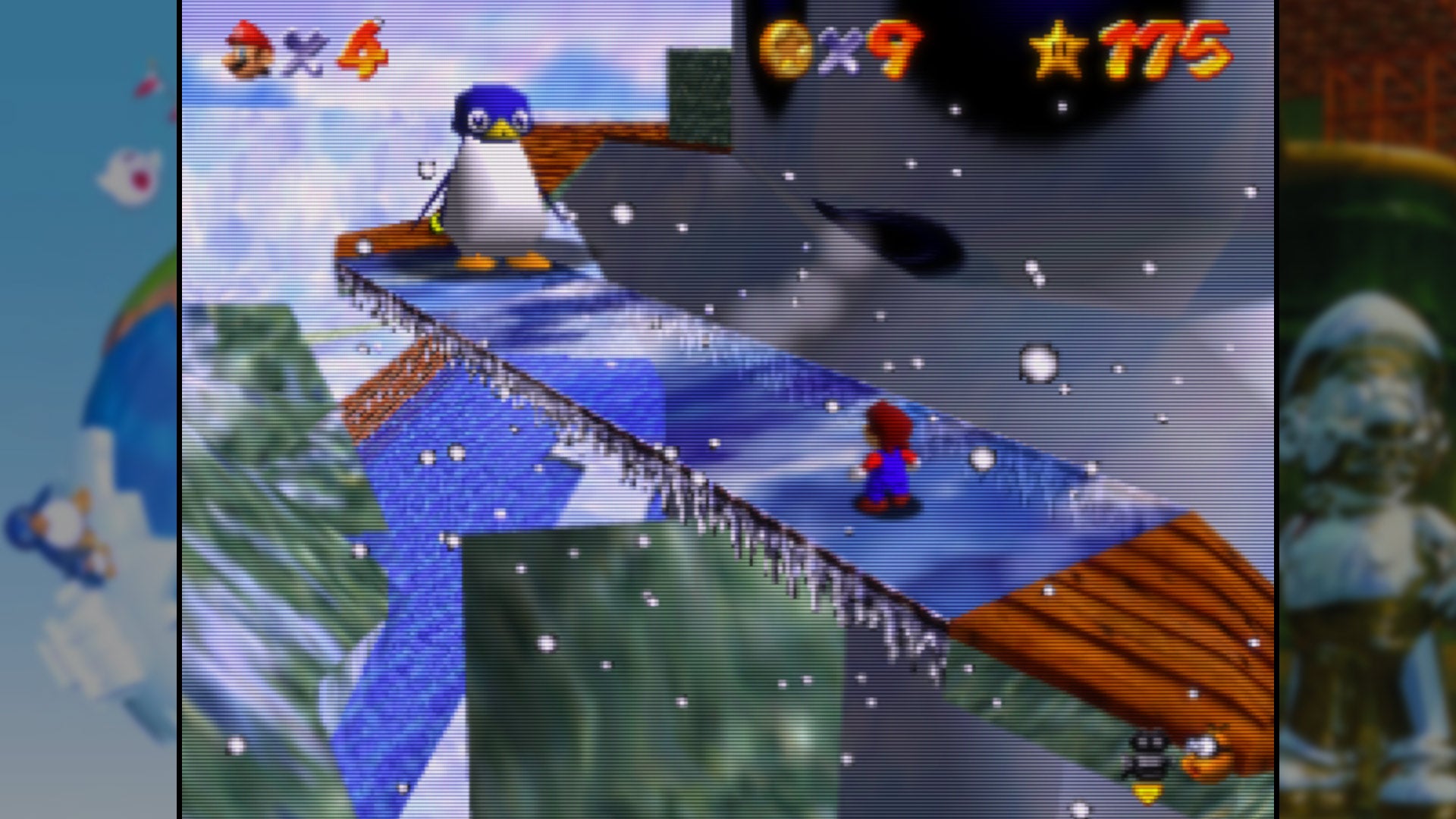
Did you think this was gonna be number one? Well it’s not, but it’s still an all-time classic. Gross Nintendo 64 polygons, a busted camera, and tricky wall jumps aside, 1996’s Super Mario 64 isn’t just a historically significant relic — it’s still a modern-day revelation. Watching Mario break the 2D plane for the first time changed a generation of players, creating one of the defining “next-gen” epiphanies current leaps in technology struggle to live up to.
Just the movement and physics alone were breathtaking, harnessing the Nintendo 64’s new analogue control stick to both set new standards in player-character expressiveness and instantly make the digital-only controls of competing games feel antiquated. So enthused were the designers that they went a little overboard, giving Mario the single largest and most complex moveset he’s ever enjoyed. It can be a little hard to fully get to grips with, but the high skill ceiling for mastery is a big part of the fun.
Super Mario 64 is also pound for pound one of the best 3D Super Mario games, bursting at the seams with mischievous platforming and satisfying puzzles. From Cool, Cool Mountain to Dire, Dire Docks and Rainbow Ride, the game features iconic maps and some of the most satisfying collectible challenges in the series. Tick Tock Clock haunts me to this day.
The game straddles a difficult inflection point for the series, showcasing top-tier course designs built around Mario’s multitude of new jumps, while also being hampered by compromises made to take advantage of then cutting-edge technology. Those weigh it down, keeping it from ranking higher, but in some ways it’s a testament to just how strong its fundamentals are that the overall package remains one of the best platform games ever. Maybe Nintendo will remake it one day, making it the number-one Mario game it has the DNA to be. — Ethan Gach
Read More: Super Mario 64 Fans Have Tried To Get This 1-Up Without Dying For Over 20 Years
4. Super Mario Galaxy (Wii)
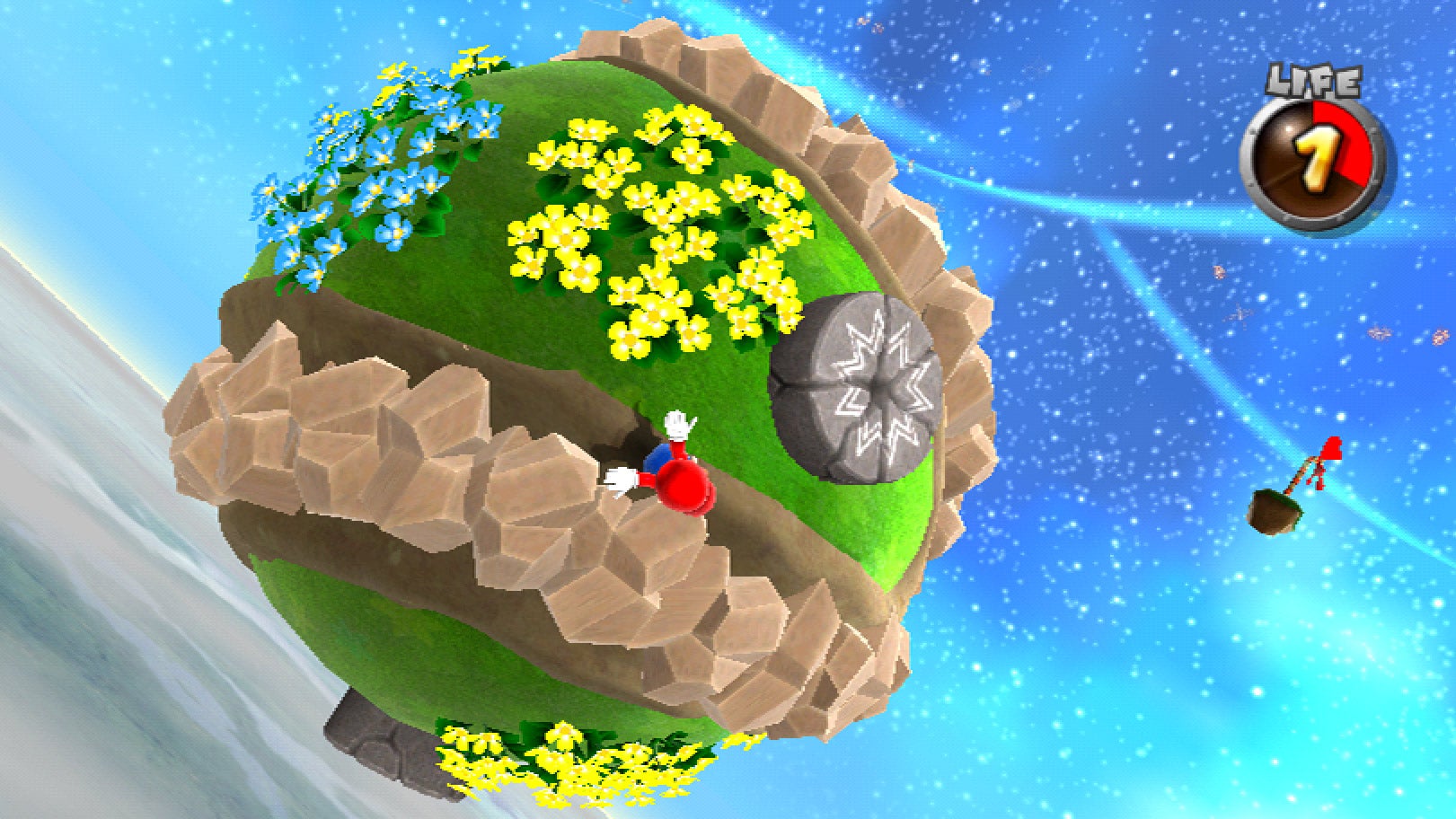
After Super Mario 64, it was tough in some ways to imagine Nintendo ever delivering another massive leap in terms of imagination and possibility for its flagship series. (Super Mario Sunshine has its place, but a paradigm shift it was not.) What new frontiers were there for Mario, and for 3D platforming, to conquer?
Oh, how wrong we were to doubt. Super Mario Galaxy was yet another massive imaginative leap forward for the series, playing with gravity, with the shape of environments, with a cosmic theme that took the series to bold new places and reinforced the feeling that Mario really has no limits. Buoyed by a gently melancholy story that introduced the character of Rosalina and by the most mind-bending and profound ending in the series, Super Mario Galaxy is all the things we want Mario to be: challenging, inventive, vibrant, intuitive, beautiful, and epic. — Carolyn Petit
Read More: Super Mario Galaxy’s Opening Is Still Terrifying
3. Super Mario Galaxy 2 (Wii)
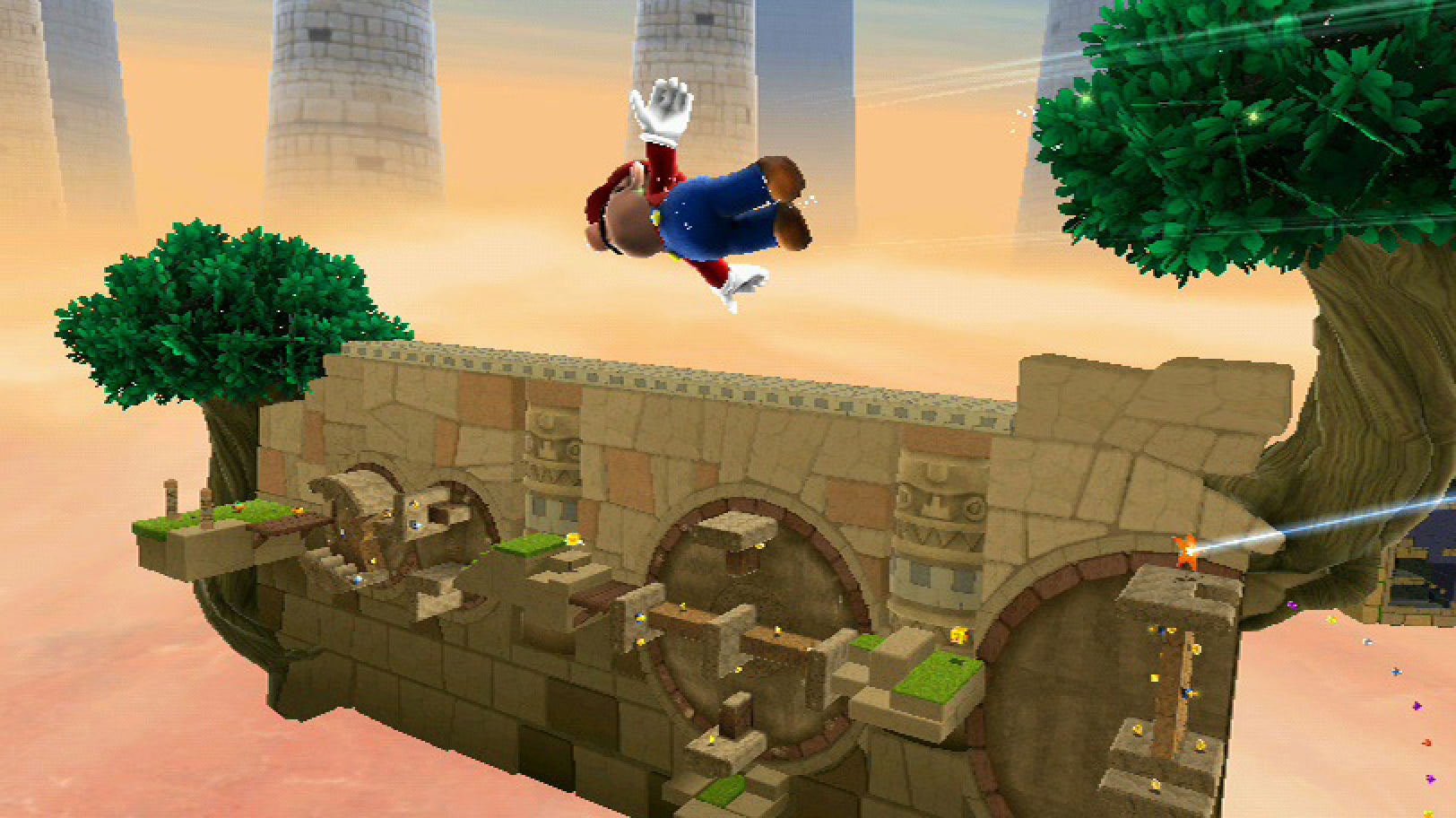
Sequels aren’t always better than the original. And in Mario’s case, they often tend to feel like uneven leftovers doctored up into another night’s dinner; a collection of half-baked ideas, prototypes, and B-sides that didn’t make the first cut but are still ultimately good enough to see the light of day eventually.
Super Mario Galaxy 2 is not that. Yes it’s more, but it’s also better, in every way, than its already groundbreaking predecessor. The 2010 Wii game is the definitive 3D Super Mario, complete with gorgeous worlds to explore, ambitious puzzle designs, and one of the most satisfying versions of Mario to control in any game. It somehow has even more planets than the first game, with an even greater level of variation and experimentation. Perhaps buoyed by previous success and the Wii’s blockbuster sales, Nintendo’s designers seemed to take even more chances — and, I suspect, had more fun — making Galaxy 2.
Super Mario has always fundamentally been a series about gravity. You can’t jump if you don’t eventually fall, and Nintendo spent decades exploring that in 2D and 3D. Galaxy explored it from the inside out, using Wii motion controls to help you tease it out and feel it deep in your bones, and Galaxy 2 took that to another level. — Ethan Gach
Read More: Nintendo Just Threw Super Mario Galaxy 2 Down The Memory Hole
2. Super Mario Bros. 3 (NES)
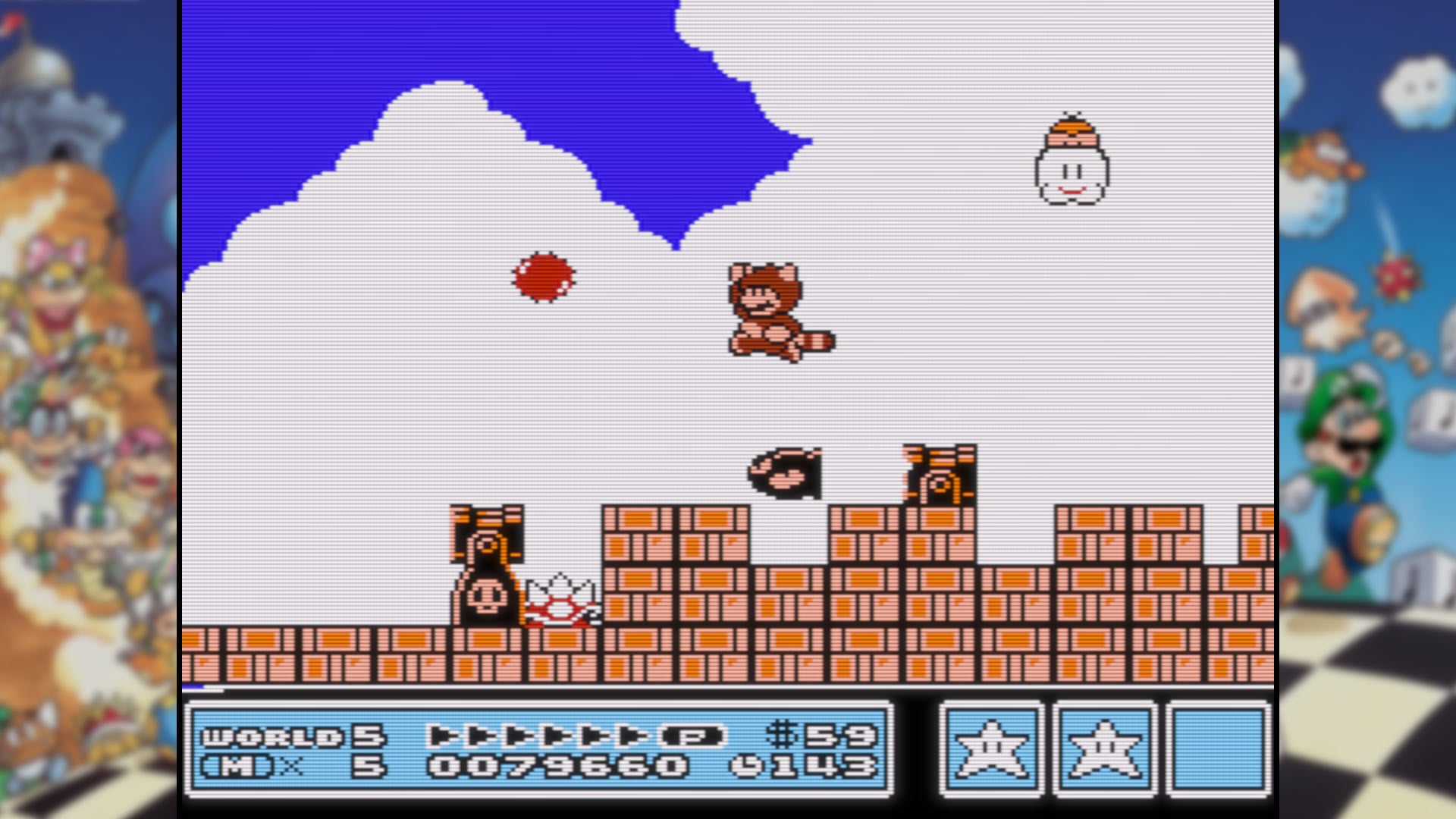
The debate over whether Super Mario Bros. 3 or its SNES successor represents the pinnacle of 2D Mario platforming may never be settled, but one thing seems certain to me: The plumber’s final NES adventure delivered on the promise of a “world” for Mario to journey through two years before we got the game that’s actually called Super Mario World.
It wasn’t just the new map system that did it, though that’s certainly a big part of it. Getting to see King Koopa’s military might represented across the landscape by forts and castles as your quest took you from the bucolic Grass Land (world 1) all the way to the foreboding, Mordor-like Dark Land (world 8) conjured the sense of a true quest against a vast force of evil, while little touches like the ways the hammer bros. moved around between stages brought that map to life–a real, living world.
But the game also represented another massive leap for the series (and for platforming games in general) in its level design, with slopes you could slide down, autoscrolling airships lending a formidable new feel to Bowser’s forces, and gimmicks that still surprise and delight to this day, like Giant Land (world 4), in which enemies and environmental features alike are suddenly many times their normal size.
To top it all off, Mario’s momentum is newly refined — run interrupted for a bit and you attain P-speed, moving faster, leaping farther, and even able to take flight — and he’s got a slew of new power-ups to play with, from the oddball Kuribo’s shoe to the iconic tanooki suit. Super Mario Bros. 3 is just bursting with ingenuity and generosity from top to bottom, and upon release utterly destroyed the existing standards for games of this type with all of its inventiveness and fun, seamlessly weaving dozens of great new ideas into one epic adventure. — Carolyn Petit
Read More: The Making (And Legacy) Of Super Mario Bros. 3
1. Super Mario World (SNES)
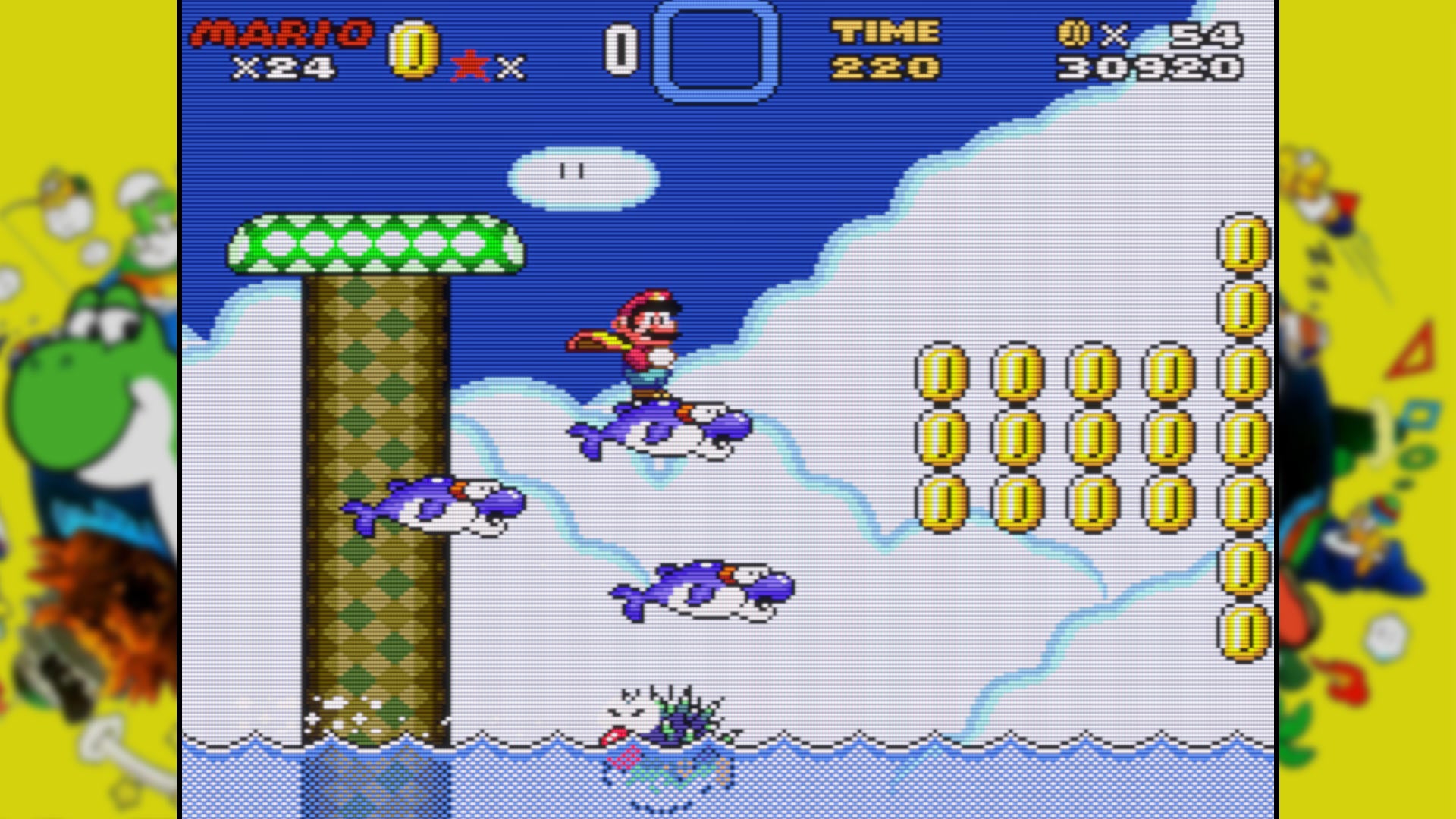
This is it. Super Mario World. The best 2D Mario game Nintendo ever made is thus the best Mario game overall. Elegant and simple yet challenging and complex, the 1990 pack-in launch game for the SNES has aged like a fine Bordeaux: silky smooth and exquisitely harmonized. It controls like a dream. The pixel art still looks great. And each of its 73 levels offers something unique, with puzzles that evolve as new block types are unlocked and even a complete visual overhaul once the game is completed.
It’s not as daring as Super Mario Bros. 3 or as ambitious as Super Mario Galaxy 2, but it’s undoubtedly the most balanced and well-rounded package in the series. Feathers transform Mario into a gravity-defying superhero. Different-coloured Yoshi harness various magical abilities from fire balls to mini-earthquakes. And ingenious hidden exists culminate in Star Road, an immaculate series of secret levels whose level of challenge is exceeded only by the amount of imagination on display.
Each zone on the map tells a story, and each one connects to the next, weaving an adventure that’s minimalistic but evocative, taking Mario over hills, underground, through foggy forests, and across prehistoric mountains. An underappreciated aspect of Super Mario World is how each new level, and new zone, slowly builds upon the last, not just mechanically but thematically as well. There’s no real backstory and hardly any dialogue, and yet each new step and every enemy jumped on carries you along a bit further through the most polished and quintessential Mario adventure ever made. At least, for now. — Ethan Gach
Read More: Unearthed 1990 Interview Reveals Great Insights About Super Mario World
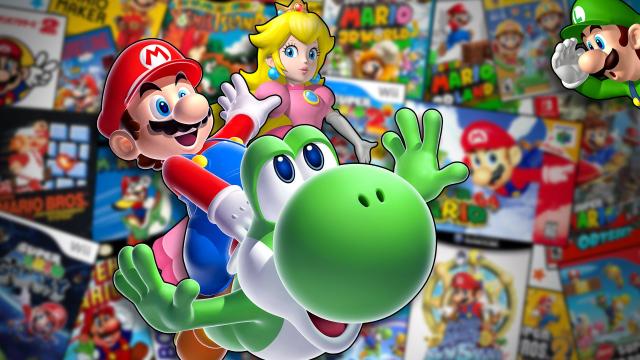
Leave a Reply